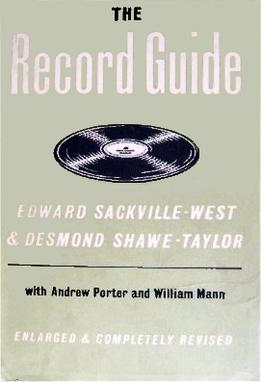Related Research Articles
Discography is the study and cataloging of published sound recordings, often by specified artists or within identified music genres. The exact information included varies depending on the type and scope of the discography, but a discography entry for a specific recording will often list such details as the names of the artists involved, the time and place of the recording, the title of the piece performed, release dates, chart positions, and sales figures.
Sergei Prokofiev set to work on his Piano Concerto No. 2 in G minor, Op. 16, in 1912 and completed it the next year. However, that version of the concerto is lost; the score was destroyed in a fire following the Russian Revolution. Prokofiev reconstructed the work in 1923, two years after finishing his Piano Concerto No. 3, and declared it to be "so completely rewritten that it might almost be considered [Piano Concerto] No. 4." Indeed, its orchestration has features that clearly postdate the 1921 concerto. Performing as soloist, Prokofiev premiered this "No. 2" in Paris on 8 May 1924 with Serge Koussevitzky conducting. It is dedicated to the memory of Maximilian Schmidthof, a friend of Prokofiev's at the Saint Petersburg Conservatory, who had committed suicide in April 1913 after having written a farewell letter to Prokofiev.
Frederick Emil Ahlert was an American composer and songwriter.

Eric Dolphy at the Five Spot, Vols. 1 and 2, is a pair of jazz live albums documenting one night from the end of multi-instrumentalist Eric Dolphy and trumpeter Booker Little's two-week residency at the Five Spot jazz club in New York. This was the only night to be recorded. The engineer was Rudy Van Gelder.

Tintagel is a symphonic poem by Arnold Bax. It is his best-known work, and was for some years the only piece by which the composer was known to many concert-goers. The work was inspired by a visit Bax made to Tintagel Castle in Cornwall in 1917, and, although not explicitly programmatic, draws on the history and mythology associated with the castle.
Denis William Stevens CBE was a British musicologist specialising in early music, conductor, professor of music and radio producer.

The Penguin Guide to Recorded Classical Music was a widely distributed annual publication from Britain published by Penguin Books that reviewed and rated currently available recordings of classical music. It was written by Ivan March, a music journalist, consultant and former professional musician; Edward Greenfield, music critic of The Guardian and Robert Layton, music writer and lecturer. All three were also reviewers for the UK classical music monthly Gramophone. From 2002, a fourth contributor, Paul Czajkowski, was credited, first as assistant editor and then as co-author.
Edward Harry Greenfield OBE was an English music critic and broadcaster.

The Record Guide was an English reference work that listed, described, and evaluated gramophone recordings of classical music in the 1950s. It was a precursor to modern guides such as The Penguin Guide to Recorded Classical Music.
This is a list of recordings of the Messa da Requiem by Giuseppe Verdi (1813–1901).
Santiago Rodriguez is a Cuban-American pianist. Rodriguez is an exclusive recording artist for Élan Recordings. His Rachmaninov recordings received the Rosette award in The Penguin Guide to Recorded Classical Music and he is a silver medalist in the Van Cliburn International Piano Competition.
This is a list of recordings of La Grande-Duchesse de Gérolstein, an opéra bouffe, in three acts and four tableaux by Jacques Offenbach to an original French libretto by Henri Meilhac and Ludovic Halévy. The work was first performed in Paris on 12 April 1867.

The Schwann Catalog was a catalog of recordings started by William Schwann in 1949. The first edition was hand-typed and 26 pages long, and it listed 674 long-playing records. By the late 1970s, over 150,000 record albums had been listed in Schwann. The company was honored by the record industry both at the 25th anniversary (1974) and 35th anniversary (1984).

In the Beginning is a double album by flutist Hubert Laws released on the CTI and recorded at Rudy Van Gelder's studio in 1974. The album was later reissued on CTI as two separate volumes entitled Then There Was Light.

Peter Crossley-Holland was a composer and ethnomusicologist. He wrote several books on the music of Tibetan Buddhism and composed music in ethnic styles including Celtic.

Christgau's Record Guide: Rock Albums of the Seventies is a music reference book by American music journalist and essayist Robert Christgau. It was first published in October 1981 by Ticknor & Fields. The book compiles approximately 3,000 of Christgau's capsule album reviews, most of which were originally written for his "Consumer Guide" column in The Village Voice throughout the 1970s. The entries feature annotated details about each record's release and cover a variety of genres related to rock music.
Suite Antique is a 1979 concertante work by John Rutter that is written for harpsichord, flute and string orchestra.

The Three-Cornered Hat is a 42-minute classical studio album in which the Pittsburgh Symphony Orchestra under André Previn perform the whole of Manuel de Falla's ballet The Three-Cornered Hat and, as a filler, the Ritual Fire Dance from his ballet Love the Magician. The longer work's two brief vocal passages are sung by the American mezzo-soprano Frederica von Stade. The album was released in 1983.
Ivan March was a musician, editor of The Stereo Record Guide and a series of Penguin Guides to recorded classical music.
Robert Edward Layton was an English musicologist and music critic.
References
- Goff, Martyn "The Stereo Record Guide, Vol 3" The Musical Times, August 1963, page 561–562.
- Goff, Martyn "The Stereo Record Guide.4" The Musical Times, May 1966, pages 410–411.
- Paterson, Robert "The Stereo Record Guide, Volume 2" The Musical Times, January 1962, page 30.
- "The Stereo Record Guide Vol. II" Music Educators Journal, September 1962, page 132.
- Wilson, Carolyn "The Stereo Record Guide vol. 5" The Musical Times, August 1968, pages 730–731.